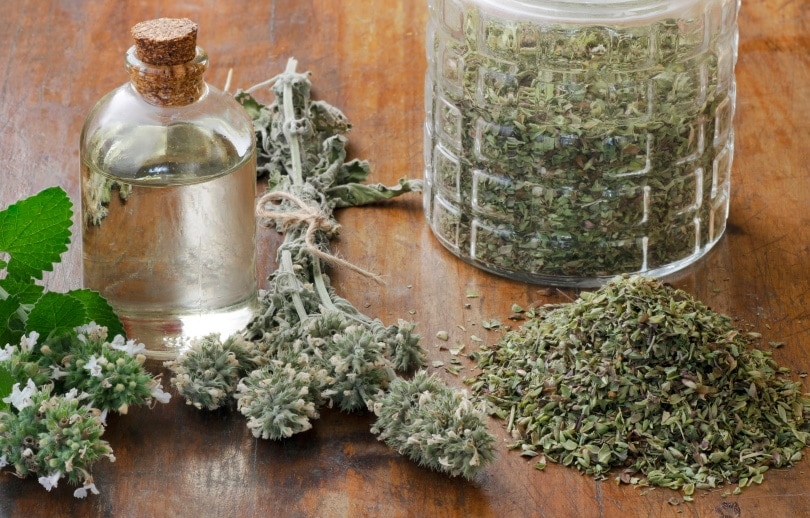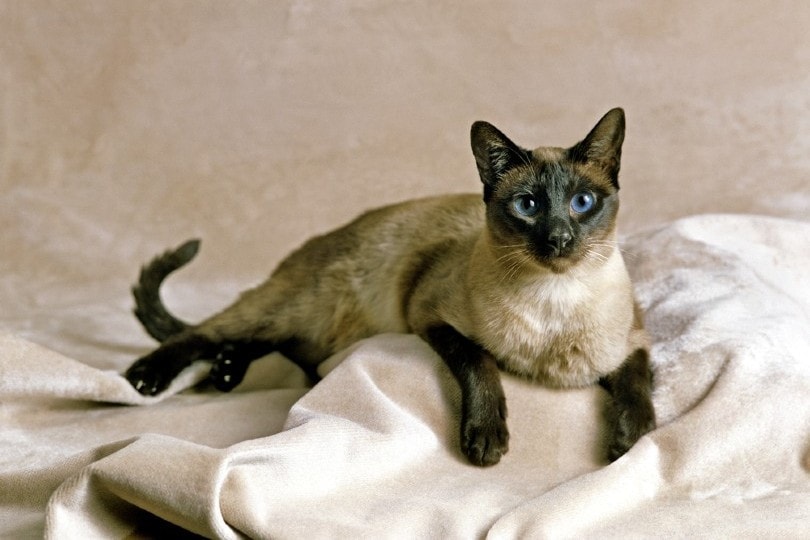Why Doesn’t My Cat Like Catnip? 3 Likely Reasons

By Misty Layne
Updated on

Ah, catnip; the drug of choice for kitties everywhere. Just one whiff and our feline friends are either running up the walls or lazing around and batting at imaginary objects. It’s good times for everyone involved since we get to enjoy watching our cat’s short but fun “high”. And all cats enjoy catnip. Right?
Wrong! Not every cat likes catnip, believe it or not, and there are three reasons why your cat could be among those that dislike the plant. However, you might be able to entice your pet into a catnip high eventually or try alternatives to catnip if you feel like kitty is missing out on the fun and relaxation. Keep reading to learn more!
How Catnip Works
Catnip (Nepeta cataria) is a plant that’s a member of the mint family, but it’s not the actual plant that gives your cat a pleasant little buzz. Instead, the buzz comes from an oil on the plant called nepetalactone. It’s believed that once your feline friend gets a whiff of the oil, it binds itself to receptors found in the nose. This, in turn, stimulates neurons that go to the brain, and once in the brain, the oil hits the “happy receptors”, resulting in your kitty’s high. Another theory is that the smell of catnip is similar to pheromones.
Once the oil hits your cat’s brain, you can expect any number of reactions, such as:
- Lots of sniffing of the catnip
- Rolling around in the catnip
- Rubbing up against catnip
- The zoomies
- Batting at imaginary objects
- Lots of meowing or purring
- Increasing play
- Napping

The 3 Likely Reasons Your Cat Doesn’t Like Catnip
And here are the reasons your cat may not enjoy catnip!
1. Too Young or Old
Your cat may still be too young to get that nice little buzz from catnip. Until cats are anywhere from 6 months to 1 year, they won’t react to catnip. That said, all kittens are different, and some may become sensitive to catnip earlier than 6 months. But if this is the reason your cat doesn’t like catnip, don’t worry. As it gets older, there’s a good chance your furry friend will be one of the cats that react to catnip as normal!
Also, as it gets into its senior years, your cat might lose the ability to smell catnip, which would lead to little or no response to the plant.

2. Genetics
As it turns out, not all felines are hardwired to respond to catnip. It’s estimated that up to 1/3 of all cats are missing the gene needed to react properly to catnip, which could be the case with your pet. If your cat isn’t too young or old, it could be that it’s simply among those cats that aren’t genetically hardwired for the plant. You can try alternatives in this case, which we’ll discuss below!
3. Too Much Catnip
Maybe your cat used to respond to catnip but doesn’t anymore. If your pet isn’t older, then the reason could be that it has been overexposed to the plant. If you give your kitty catnip often, it could lead to it becoming desensitized to it, which results in no longer having a reaction. So, limit how much catnip you’re giving your furry pal to prevent this! Once every couple of weeks should suffice.

Catnip Alternatives
If your cat isn’t a fan of catnip, and you feel like it’s missing out, there are some alternatives you can try out on them (all perfectly safe for kitty).
- Silvervine — also known as Actinidia polygama, is a part of the kiwi family and produces a similar reaction in cats as catnip does; it is used often in Asian countries, where it originates, with the cats’ response to it being known as “matatabi dance”.
- Tatarian Honeysuckle — also known as Lonicera tatarica, it’s thought that this plant causes an even bigger reaction in felines than catnip; it works better as a stimulant if the wood is wet.
- Lemongrass — also known as Cymbopogon citratus, this is an herb you may have used in cooking before, but it also doubles as a catnip alternative; you can plant some in your garden, so you always have it on hand!
- Valerian root — also known as Valeriana officinalis, is another plant you may have used yourself; the active ingredient here is actinidine, and the plant can be used just like catnip in toys or sprinkled around.
Conclusion
Don’t worry if your cat doesn’t like catnip, as there are a few valid reasons why this is the case. Your cat might not be the right age to enjoy catnip just yet (or may have aged out of the catnip stage). It may also simply be missing the gene that allows felines to get a buzz from catnip. Your pet might also have become desensitized to the plant after being given too much recently.
Luckily, there are several alternatives to catnip available that can allow your cat to have the catnip experience without the ‘nip. Silvervine is probably the most popular alternative, but plants such as lemongrass or valerian root can also be used.
Featured Image Credit: Gaston Cerliani, Shutterstock











